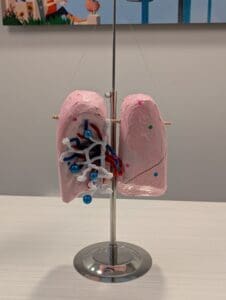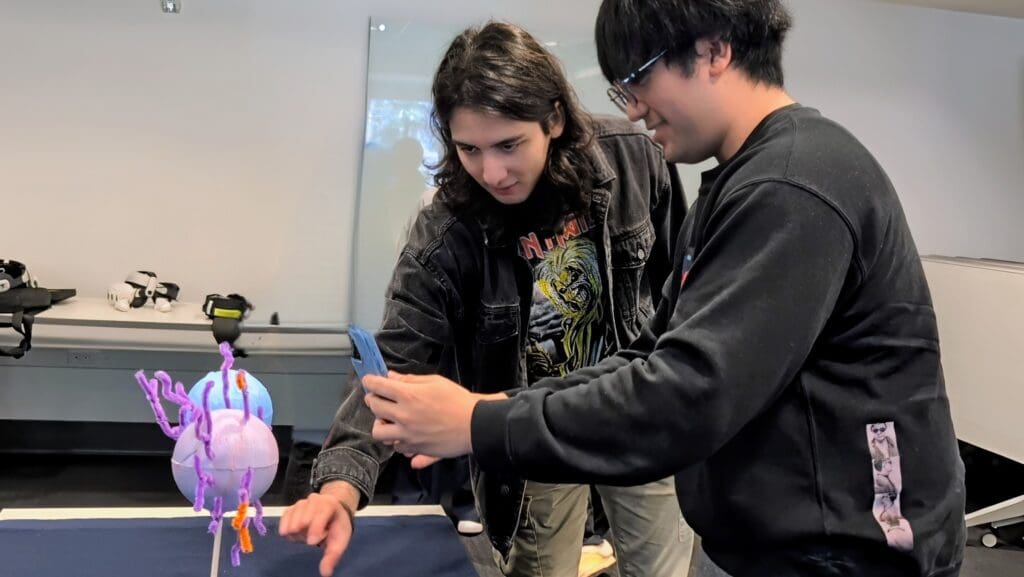
This quarter, students from Professor Reza Forough’s Biology 241: Human Anatomy and Physiology I class at Bellevue College partnered with the XR Lab to transform their handmade models into virtual reality (VR) experiences. Supported by a grant from the National Science Foundation (NSF), this innovative project demonstrates how immersive technology can enhance learning, creativity, and collaboration in the sciences.
Students began by building physical models of bones, muscles, and anatomical structures using recyclable and inexpensive materials. The goal was to deepen learning through tactile and visual engagement: by physically constructing anatomical models, students developed a stronger understanding of form, function, and spatial relationships within the human body.

To preserve and share their work, students then learned how to digitally capture their models using Polycam, a 3D scanning tool. The XR Lab provided hands-on training, teaching students how to scan their creations and prepare them for integration into ShapesXR, a collaborative VR environment. By completing the scanning themselves, students gained a deeper appreciation for the full design process—learning how model construction techniques affect digital capture quality and how 360° scanning is essential for building immersive, detailed virtual objects.
The resulting models were assembled into a virtual gallery space—sometimes referred to as a “Virtual Museum”—where future students, faculty, and the broader community can explore student work in an interactive environment. This digital preservation is critical, as the original models, made from recyclable materials, are often fragile and temporary. Now, through VR, these creative educational artifacts can be archived, referenced, and appreciated long after the course ends.
This project also highlights the broader educational benefits of immersive technology:
- Tactile and visual learning: Building and interacting with physical and digital models strengthens memory and understanding.
- Collaboration and communication: Students work together to build, scan, and curate models, developing important teamwork skills.
- Extended access: Through VR galleries, a wide audience—including non-science majors and the public—can engage with scientific concepts in a more accessible, engaging format.
In the future, Bellevue College’s XR Lab hopes to expand this initiative to include models and interactive experiences across disciplines, from microbiology to abstract fields such as mathematics. Projects like this demonstrate the potential for XR technologies to enhance not only scientific education but learning across many fields.
Learn more about the Biology 241 project and explore the virtual gallery on OER Commons here!
The XR Lab extends its thanks to Professor Reza Forough and his students for their creativity, collaboration, and contributions to the growing world of educational XR at Bellevue College.
Last Updated May 21, 2025
